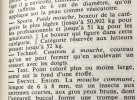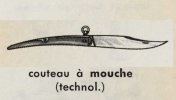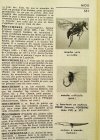Âchillepattada
Gold Member
- Joined
- May 17, 2012
- Messages
- 2,605

You are right , then problem of this locking mouche was to be a mix of two systems.
The locking ring need a very supple spring which is almost not a spring. It's only used to maintain the blades locked . The spring of the mouche on the Laguiole is a real spring . It means that it modify the movement of the blade .
I think that after a while the cutlers realized that the mouche and a strong spring were enough to make the system secure and the action of the spring on the blade more interesting than another locking system .
Â
PS : not sure to have been understandable






